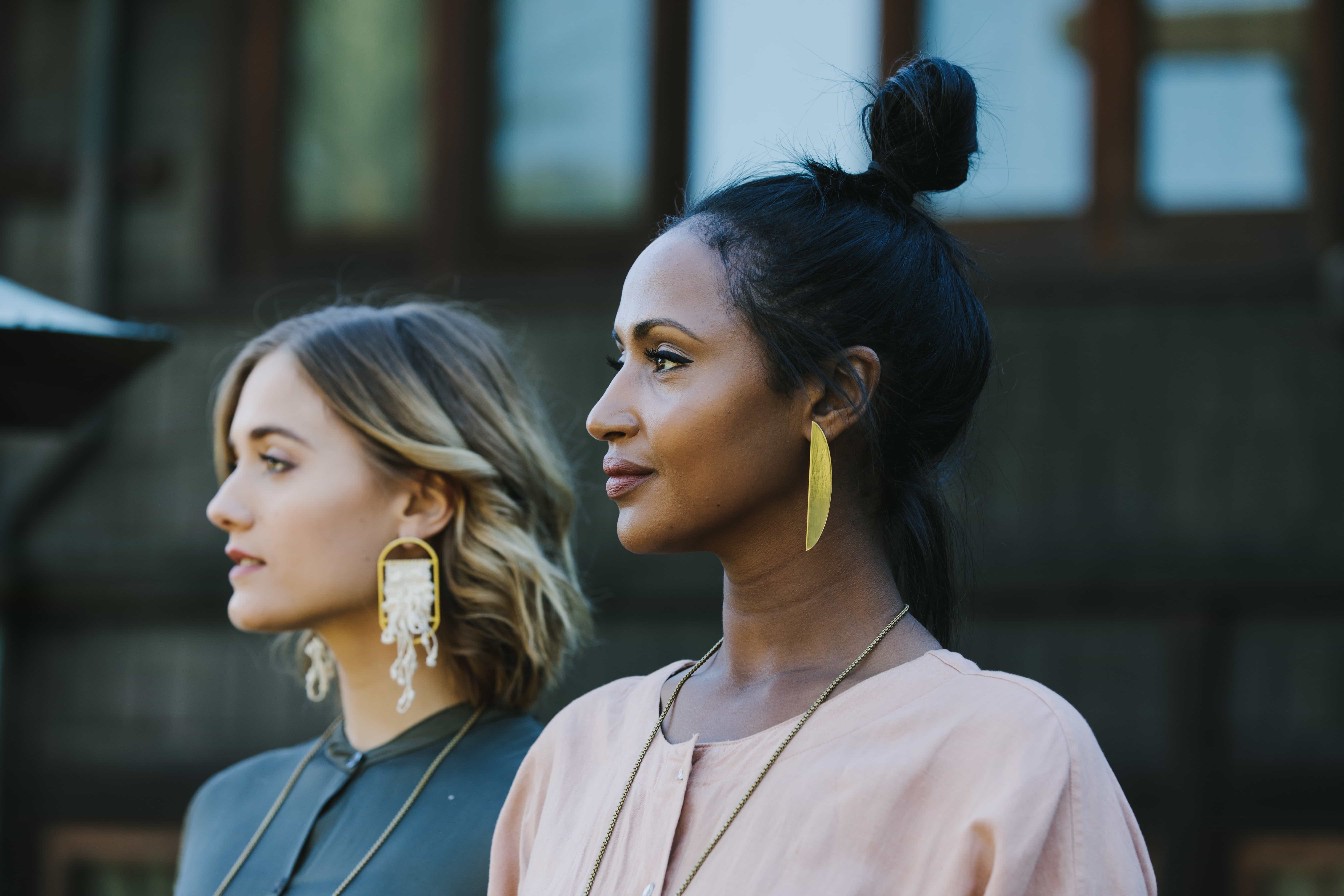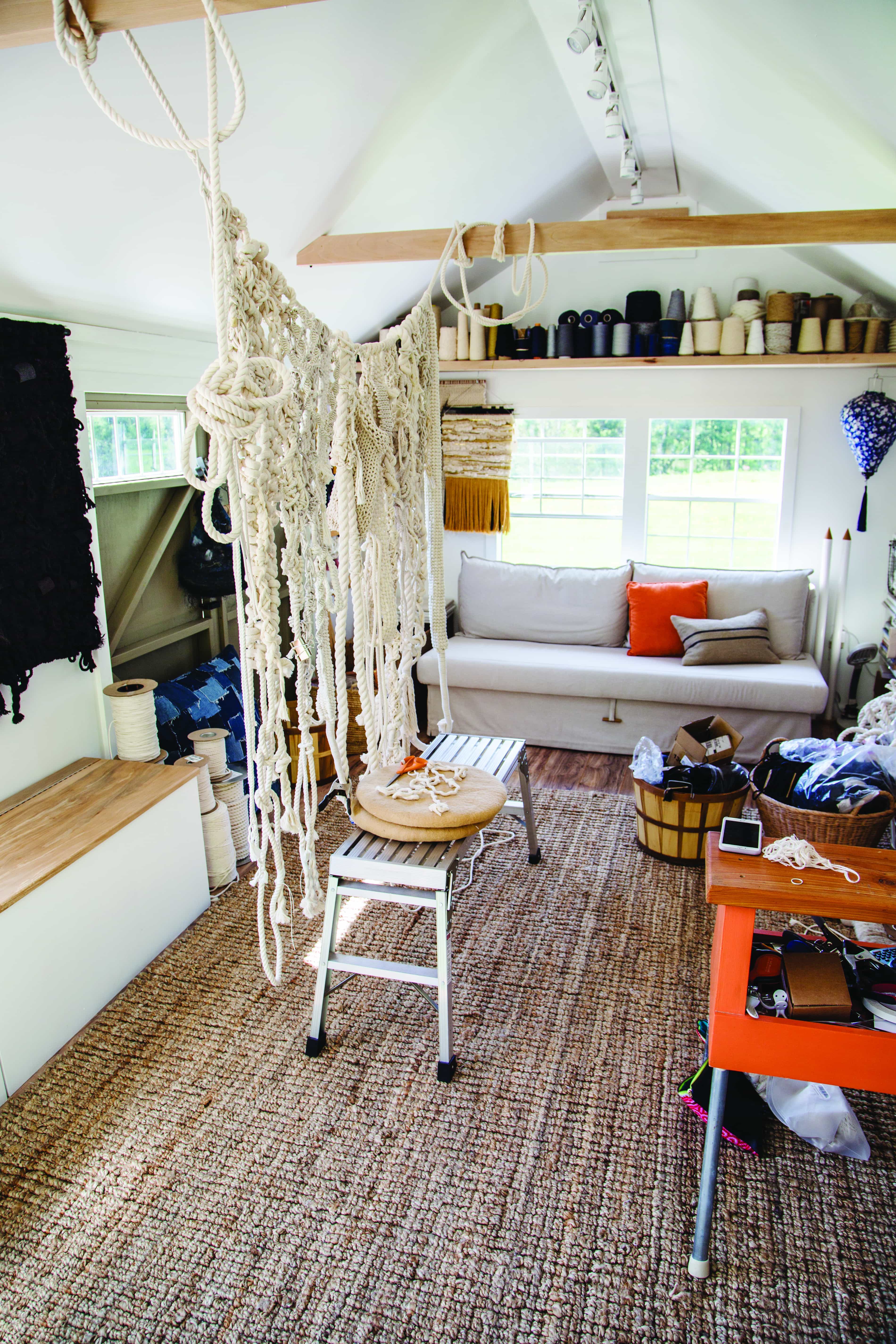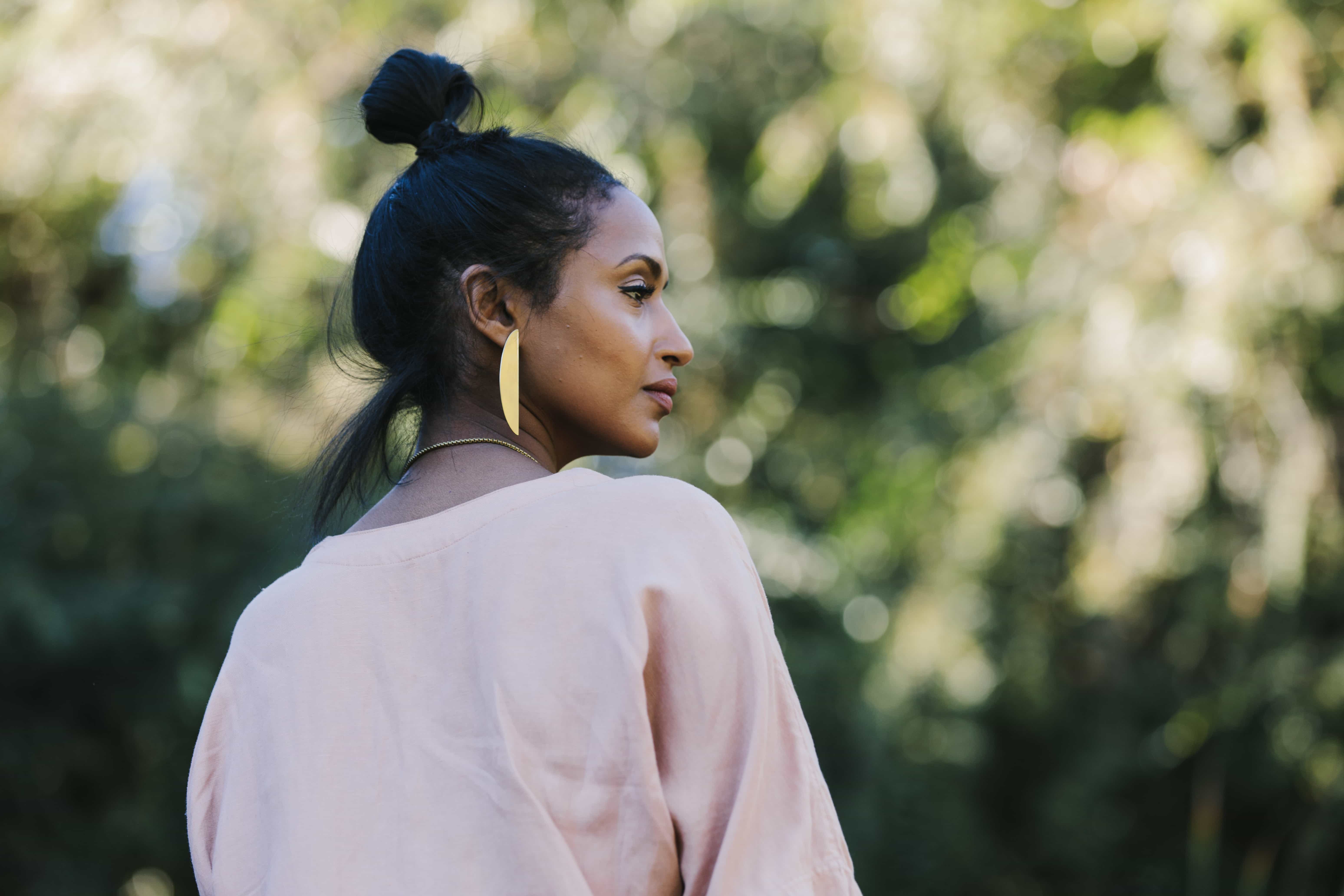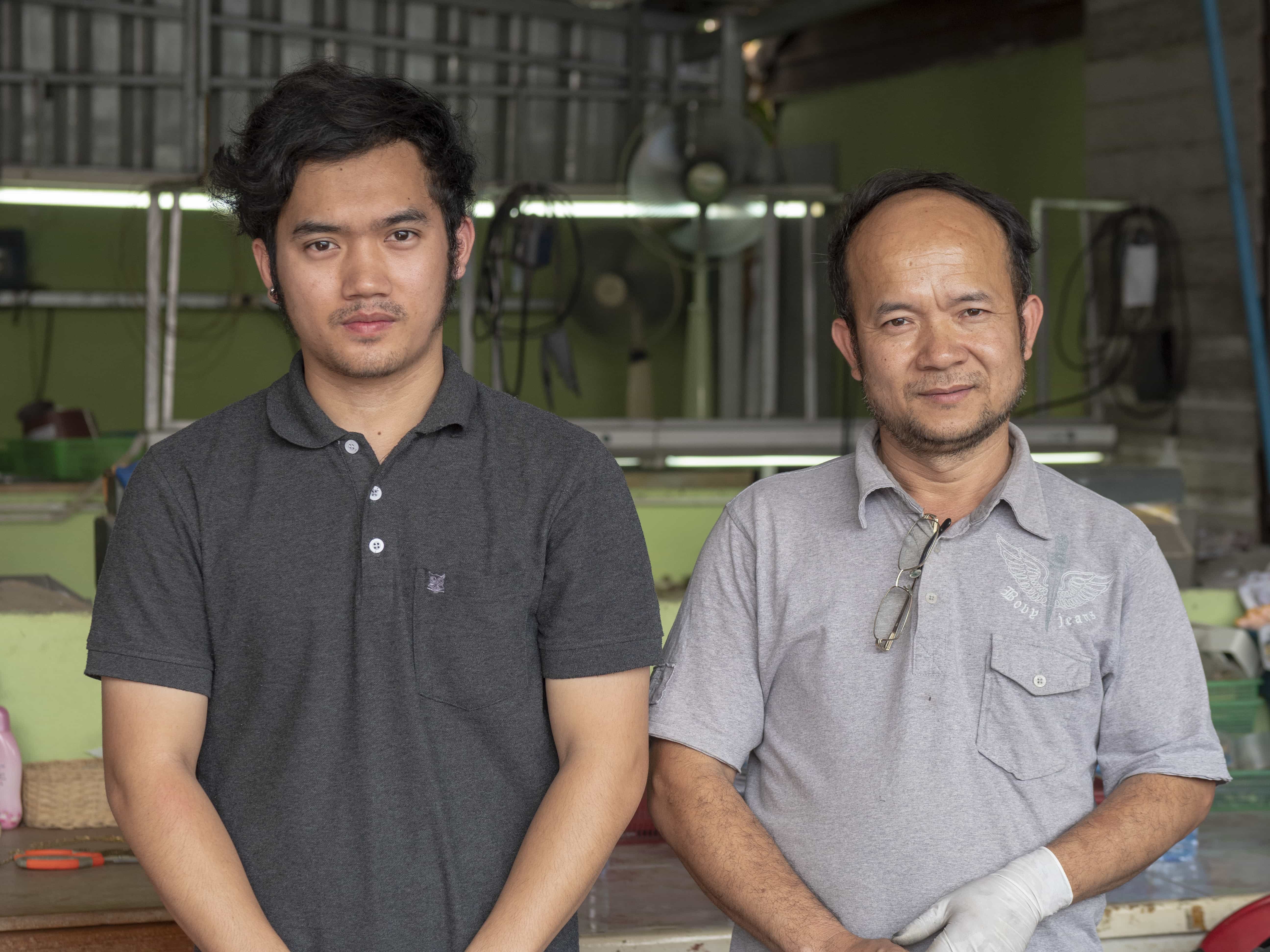THE KINDCRAFT's new 'Looped Together' woven jewelry collection features intricate weavings by New York-based fiber artist Toni Brogan inside brass frames designed by our co-founder, Lauren Lancy, and fabricated by Boonyakiat "Seng" Phooarkit, an artisan in Chiang Mai, Thailand.
Lauren recalls first seeing Brogan's work on her @thecatskillkiwi Instagram account. "I first met Toni in the summer of 2016 when I was staying in the Hudson River Valley during a trip back from Thailand." After getting to know Brogan's fiber art and discussing collaboration, "I had this idea of her weavings as wearables."

Wild Threads
Toni Brogan's creative life began in the North Shore of Auckland, New Zealand where, along with her three older sisters and younger brother, she was raised to embrace a do-it-yourself ethos. “We were really poor and so we always had to make everything. Everyone could knit or crochet or, in some way, make stuff. I didn't know that wasn't normal — because it was just normal to us.”
After high school, Brogan worked to save money so she could travel internationally, leaving Auckland two days after her 21st birthday with a backpack and a single pair of shoes. "In New Zealand, that's pretty much a rite of passage," said Brogan. "They even have a name for it — 'The Big O.E.' for 'overseas experience'."
Unlike most of her friends who returned after a year or so, Brogan's overseas travel experience became a way of life: For five years, she travelled through Africa, Europe, and North America, supporting herself with an astounding variety of odd jobs (partial list: waitress, dump-truck driver, and scraping mortar off used bricks) before eventually deciding to root herself in New York City's East Village in the early 1990s.
Since she was no longer living out of a backpack and inspired by the neighborhood's creative revival (“There were so many underground art galleries and performances and everyone was a dancer or singer or artist"), Brogan resumed her D.I.Y. creative projects — this time experimenting with photography, collage art, and elaborate hand patchwork on denim jeans. In 2001, she found yet another avenue for her creativity while assisting a prominent food stylist. Brogan discovered she had a talent for the work and after a few years, launched her own successful food styling business for advertisements, cookbooks, and editorial shoots.
Her shift to fiber art began five years ago as Brogan, always pushing forward and looking for new challenges, began to feel restless with both her career and her knitting—a hobby she says she took up to relax while traveling for her styling work.







“I was trawling eBay and started noticing these, like, really giant woolly things on the wall... and I was like 'What is that? How was that happening?' And so I asked a friend of mine who was an art teacher and she said 'It looks like it was woven...' and I was like 'What are you talking about?'"
Brogan decided to learn the basics of weaving by making herself a loom from a square of cardboard with some notches cut in it. "That was when the pin dropped," she said.
"It's kind of like 'No Rules' — total freedom within this parameter."
Brogan began to study in earnest. She bought vintage weaving and macramé books and, again taking to eBay, bought a wooden loom and some finished weavings that she could study. Though inspired by the work of others — artists like Françoise Grossen and the late Magdalena Abakanowicz, whose creations combined scale and texture — Brogan knew early on that she wanted to develop her own unique style. "I certainly don't want to do what everyone else is doing — zero interest in that. It was really important to make my own style, my own look, and develop my own techniques.”
Her determination to stand out also led her to collect unique and unusual fibers. “My materials are really-really-really important to me," she said. "I like to let the fiber tell me how to use it.” For Brogan, this often means finding ways to coax as much texture out of the fiber as possible. “Even on my cardboard loom, that was too boring and flat — so I would always be pulling out stubby bits and threads and having them come through the front."
It's this careful balance between control and slight unruliness which has become Brogan's artistic signature. She attributes her use of white fibers to the calming effect that the color has on her and, conversely, that her impulse to pull apart the neat threads echoes her sometimes disjointed personal journey.
“I came to understand — it's organized chaos," she said.
Her free-form fiber work began to attract attention at the same time she was growing more disillusioned with the food styling business and, two years ago, Brogan decided to devote herself to weaving full time. "Once I put my mind on something," she said, "I'm not backing down... and I was not going to accept 'No'". Brogan's drive to make a career switch proved prescient as she's quickly received an impressive number of commissions and showings.
"If you shut that door and you believe another door is going to open, it does."

Designing the Collection
For the 'Looped Together' jewelry collection, Lauren Lancy says that she was striving for a design that could carry Brogan's larger-scale textural weavings in a miniaturized form.
"We knew that we wanted to do something wearable," Lancy said, "And so I thought I could design necklace and earring frames that could be handmade in Thailand where I was living. My idea was that Toni could use them almost like a loom to weave on a more micro scale."
During her design process, she repeatedly revised the shapes to find an ideal balance between form and function: "I had to create designs that Toni could do the warp on the frame itself and then weave the weft," Lancy said. She also decided that brass would be the right metallic counterpoint to Brogan's fiber work. "I liked the material juxtaposition between the color of brass and the neutral, white color of the fiber."
Brogan agrees. “It's beautiful and I think it works great with the whites and golds.”








With the design set, Lancy then asked Boonyakiat "Seng" Phooarkit, a skilled brass artisan, to fabricate the pieces.
Originally from the northeastern province of Nong Khai, Phooarkit graduated from a gem and jewelry trade college in 1994 and subsequently worked in several factories that made jewelry for European customers. Some of these factories actually became his customers once he struck out on his own and started a small metal workshop near Chiang Mai. Assisted by his oldest son, Kitipat ("Kom"), and several other workers, the group specializes in casting custom silver, pewter, and brass jewelry and making design accessories like buttons and hardware for bags.







Though he started his career with large scale factory production, Phooarkit says he prefers working on individual or small quantity orders with challenging designs — and jokes that he's more likely to raise prices on large orders than offer a discount.
To execute the 'Looped Together' design, Phooarkit printed paper versions of Lancy's CAD sketches and attached them to the brass sheets, carving each line by hand. He then welded together the pieces and, in the case of the earrings, attached a hypoallergenic stud to the frame. The frames were then sent to Brogan in New York for the most critical step — the weaving.
Looped Together
Finding her own unique take on woven jewelry was important to Brogan. “First of all, I wanted to make sure they were completely unique and really different and no one else had done anything like it." And much like her large-scale pieces, being able to use her top choice of materials was essential. "These are all using vintage fibers. You're never going to find this fiber anywhere else. I have a limited amount of it which I can do the whole collection with."






Brogan says that she learns something new every time she does a design collaboration — in this case, how to work on such a tiny scale. "I have to have a lot of patience and I have to use the right fiber. I have to figure out how to warp it to keep it on there without sliding." She says that another technical challenge in adapting her art was figuring out how to make the back of the pieces as nice as the front — a consideration not needed for large scale pieces hung on gallery walls.
“I’m not going to sugar coat it," said Brogan. "It takes a long time to make each one."
The finished products are part of a limited edition collection which includes two woven necklaces, three sets of woven earrings, and an all-brass earring design that showcases Boonyakiat Phooarkit's metal-working skill.
"I love the fact that they're these little, tiny miniature little weavings," said Brogan, "and I can still get texture out of them. And it's jewelry! It's wearable. Who wouldn't love that?"
"I think they're such special pieces," said Lauren Lancy. "Each one really feels alive. You feel the energy of the fiber that Toni wove and Seng's brass frame is a really nice contrast."
As a designer who has spent the last five years moving between New York City and Chiang Mai, Thailand, Lancy says that the experience of creating a collection connecting her two homes also feels personally meaningful to her. "I really wanted this to be a project that combined the contemporary art of New York with the craft of Thailand — and sort of a cultural comment that we all need to be working together in a human way that's kind and collaborative. "
"I'm really happy to have all these ideas and cultures looped together into one collection."



Additional Reporting and Translation from Thailand by Ying Wisanee. Lookbook Photography by Farhad Samari. Models: Helena Yohannes and Emily Crouch. Photography of Toni Brogan's Studio by Paul Lowe, Courtesy of Where Women Create. For More About Toni Brogan, visit her Art Website and Instagram






